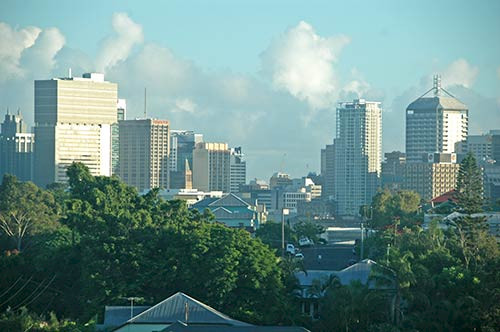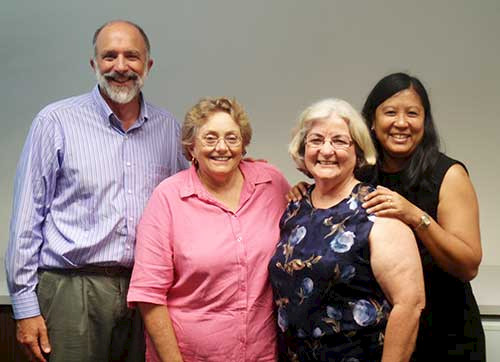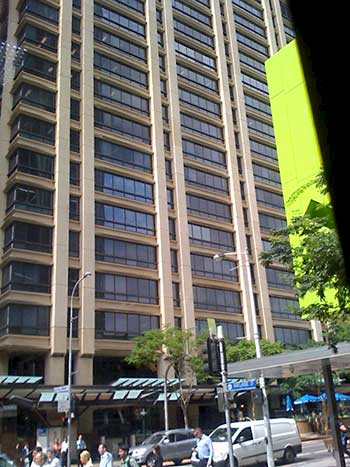Some Healthy Waterways history
Bill Dennison ·The Healthy Waterway Partnership started out as the Brisbane River and Moreton Bay Wastewater Management Study (BR&MBWMS), with six local councils in Southeast Queensland leading the effort in the early 1990s. The original Healthy Waterways office was located as part of the water management office of Brisbane City Council, led by Harry Holland. Shane Pearce was his 2IC (Second in Charge) regarding 'The Study'. Greg Oliver was the Executive Director of the Brisbane River Management Group and the Department of Environment, which often changed names, was located at 160 Ann Street. The original BR&MBWMS office was in the Ann Street offices of Brisbane City Council, but was relocated to Fortitude Valley for several years (as part of Chinatown, which was the only place that sushi was available in Brisbane in the 1990s). Healthy Waterways established their own office on the eighth floor of one of the tallest buildings in Brisbane in 1999. The building was called the MLC building and had a light tower/antenna on the roof which had color codes for different weather forecasts. We could see the tower from our house when we lived in Brisbane (1992-2002), and would point this out to visitors. A Scottish visitor said "We have a church steeple in Edinburgh that forecasts the weather. If you couldn't see the steeple, it meant that it was raining. If you could see the steeple, it meant that it was going to rain within fifteen minutes. It was deadly accurate."

The original staff in this office included Barry Ball, Trevor Lloyd, Dr. Eva Abal, Sia Poteri, Peter McMahon, and Helena Malawkin. Professor Paul Greenfield and I would come to the Healthy Waterways office from the University of Queensland to meet with the Scientific Expert Panel and to work on various books and newsletters. Barry, Trevor, Paul, Eva and I had a tradition of early morning breakfast meetings to discuss progress of the Healthy Waterways effort, often discussing modeling efforts (ad nauseam). There were several other key people in the city, Mark Pascoe from Brisbane City Council (now CEO of the International WaterCentre) and Olwyn Crimp from Queensland Department of Environment (now in the Healthy Country program), who would help us find resources and avoid pitfalls from their respective positions in government.

After I went to the University of Maryland Center for Environmental Science, the Healthy Waterways office, led by Di Tarte, relocated within the MLC building to the fourth floor. The building was renamed the Hitachi Building, and was surpassed by many new taller buildings in Brisbane and the light tower no longer provided weather forecasts. On 4 March 2011, the Healthy Waterways office, now led by Dr. Peter Schneider, moved again within the Hitachi Building, this time up to the 25th floor. On the day before the move, a chance encounter reunited several of the early Healthy Waterways stalwarts. Olwyn Crimp and I were working on a flood newsletter and Di Tarte and Eva Abal were having lunch. All four of us are still involved peripherally in Healthy Waterways, but our primary work takes us elsewhere. We all share an abiding interest in the continued success of Healthy Waterways, which was what had drawn us to the office on that day.

I recently attended a Healthy Waterways Network meeting, which was chaired by Leith Boully and the Vice-Chair Rod Lehman, both of whom I have previously worked with regarding Healthy Waterways or related issues. But the council representatives from the newly amalgamated councils, new water provider organizations and state government representatives were all completely new to me, indicating a complete turnover of the major sponsors and therefore key stakeholders in Healthy Waterways. Turnover is expected and can be invigorating, but a completely new cast of characters without the corporate memory of preceding activities can be daunting. My take on this situation is that a major issue that the new CEO of Healthy Waterways, Dr. Peter Schneider, and his staff will need to accomplish is to get these new faces informed and engaged in Healthy Waterways activities. In the vernacular of the Healthy Waterways tagline, ". . .because we're all in the same boat", these new folks will need to starting building their own new and improved boat to continue this river and bay restoration journey that was started over a decade and a half ago.
About the author
Bill Dennison

Dr. Bill Dennison is a Professor of Marine Science and Vice President for Science Application at the University of Maryland Center for Environmental Science.
Next Post > Classifying environmental problems
Comments
-
Olwyn Crimp 15 years ago
Bill - it was so wonderful to get to spend time with you again after all these years. We've sorely missed you here in south-east Queensland.

